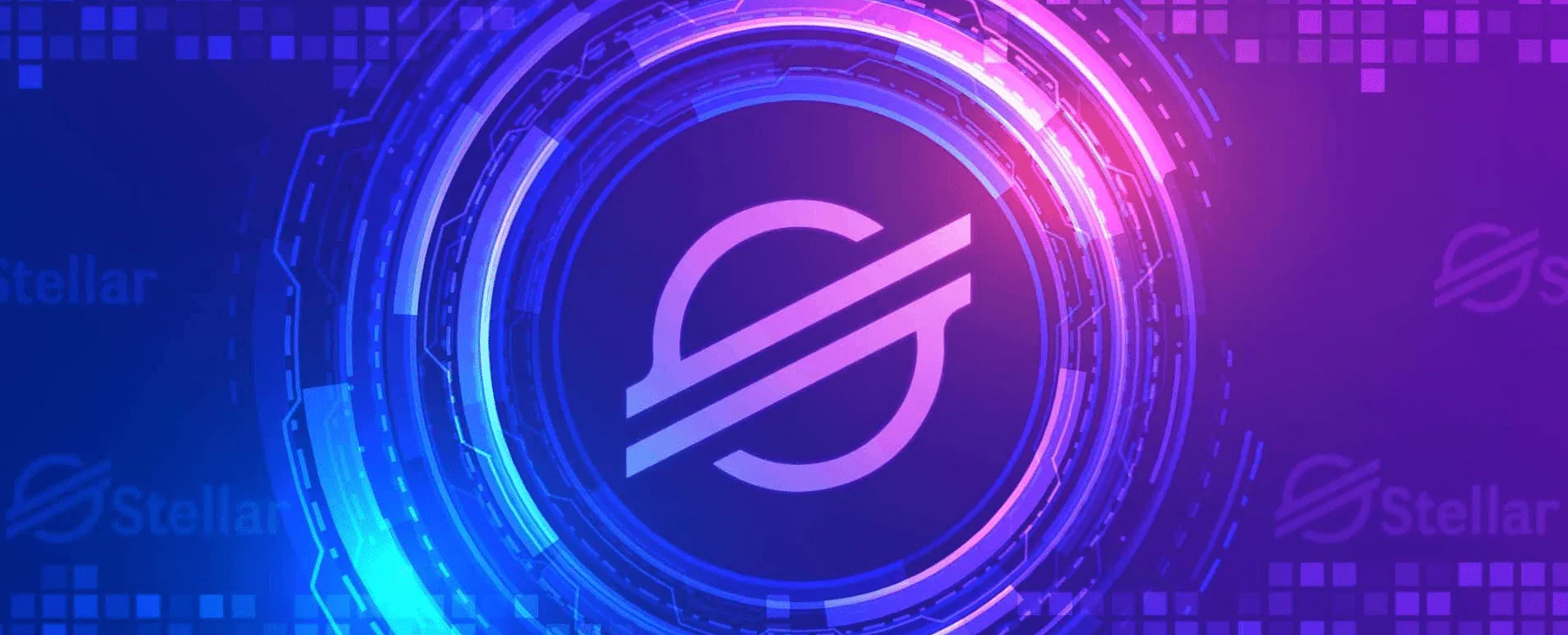Greece has made significant efforts to adopt a tax policy on crypto assets as the use of cryptocurrencies grows globally. In January 2025, the Greek government introduced new tax regulations for cryptocurrency transactions.
15.11.2023

Welcome to the exciting world of Stellar—a project that reflects the future of cryptocurrencies and blockchain technologies. If there’s one significant advantage often mentioned in the context of cryptocurrencies, it’s the elimination of intermediaries and minimizing fees for transactions. However, as soon as users want to convert their “crypto” into other currencies, fees and delays start to appear.
The year 2017 left its mark in the history of cryptocurrencies, and among the plethora of new projects, Stellar stands out as one of the leaders. It not only caught the attention of investors after a sharp increase in market capitalization but also gifted the financial sector with innovative solutions in fintech development. Stellar, with its cryptocurrency XLM, not only offers a new way of conducting transactions. This project sets new standards in simplifying international transfers, transforming cryptocurrencies into real money, and creating a more accessible financial system.
The main mission of the project is to combat poverty and provide access to finances for those who are left out. The word “stellar” itself has become a synonym for the future. However, how does this cryptocurrency wonder work? All transactions conducted through the network automatically find optimal exchange rates, ensuring benefits for all parties. But Stellar is not just about transactions; it’s a philosophy that aims to transform the financial system and make it more fair and efficient.
In this article, we will delve into the depths of the Stellar project, explore its technological features, learn about its goals and objectives, and examine its role in the modern world of cryptocurrencies and what the future holds for Stellar.
The Birth of Stellar: Founders and Their Journey
The history of the development of the Stellar project is linked to talented individuals and their drive for decentralized financial solutions. At the heart of this story is American programmer and entrepreneur Jed McCaleb, whose career is intertwined with key moments in the world of cryptocurrencies and blockchain.
First and foremost, McCaleb was a co-founder of the file-sharing platform eDonkey2000, a project that became a symbol of file sharing on the internet. Later, his name became associated with the crypto community through the cryptocurrency exchange Mt.Gox and technical leadership at Ripple. However, disillusionment with the centralized orientation of Ripple inspired McCaleb to create his own project.
The non-profit organization Stellar Development Foundation (SDF) acted as a catalyst for the creation of the project. One of the key figures in the formation of the project was Stanford professor David Mazières. The interaction between McCaleb and Mazières led to the launch of an updated blockchain operating on the Stellar Consensus Protocol. This moment was pivotal in the evolution of Stellar and underscored its independence from cloning other projects.
Another important aspect of its development was its adaptation to address real financial challenges. The commercial arm, Lightyear.io, and later the company Interstellar, successfully collaborated with SDF to enhance the efficiency of international payments using Stellar blockchain technology. This represents the path from initial ambitions to concrete practical implementations. In 2019, the role of CEO of SDF was passed on to Denelle Dixon, emphasizing the project’s continuous drive towards innovation and adaptability.
The journey to create and develop Stellar Lumens (XLM) demonstrates that ideas and solutions in the world of cryptocurrencies and blockchain technologies arise from the meeting of talents and ambitions, and their development depends on engagement with real financial needs.
Internal Mechanism: How Stellar Operates
The key foundational element in the structure is the Stellar Consensus Protocol (SCP), created by David Mazières, considered the first provably secure consensus mechanism. Considering the structure of a “federated Byzantine agreement system,” SCP provides a reliable foundation for generating new blocks and confirming transactions.
The process of achieving consensus using SCP involves three important stages:
Nomination: At this stage, node participants present candidate blocks to seek approval, initiating the initial phase of the consensus-building process.
Voting: Computational nodes then conduct voting for various candidates, both within their own nodes and among other nodes in the network. Upon reaching a specific quorum, a “ballot” is formed, allowing the inclusion of a new record in the blockchain.
Timeout: If the voting process does not result in a quorum, this mechanism is activated. Nodes reject candidates that did not garner enough support and initiate the voting procedure again.
The Stellar network structure comprises three important types of computational nodes:
Observers: They act as “observers,” transmitting operations into the common network.
Validators: Validator participants are actively engaged in the SCP voting mechanism and validate new blocks, ensuring the strength and reliability of the entire network.
Archivists: Their task is to ensure continuous storage and updating of the blockchain registry in the Stellar network.
Thus, the internal mechanism of the Stellar network is based on the coordinated operation of these elements, providing stability, reliability, and innovation to this blockchain platform.
The Economics of Stars: Token Structure in the Network
The essence of the economic structure of the Stellar blockchain is closely linked to its primary goal of providing efficient and cost-effective international payments. In this context, analyzing the dynamics raises questions about the future—what will be the Stellar price in dollars and the XLM forecast? One of the key aspects of this structure is the tokenomics of Stellar (XLM), which plays a vital role in the functioning of the entire platform.
At the network’s inception, an initial emission of around 100 billion Stellar was created, representing the main asset on the blockchain. This volume was necessary to support various aspects of the platform, such as validator rewards, ecosystem stimulation, and distribution among partners and participants.
The initial plans involved distributing over 50% of the XLM emission over the first 10 years of the network. This was achieved through an extensive airdrop program, during which owners and participants of other blockchain platforms could receive a small amount of XLM cryptocurrency for free. However, such generosity affected the market rates for XLM. In response to this, in 2019, the Stellar Development Foundation (SDF) decided to reform the tokenomics. They conducted a burn of over 55% of the total XLM emission and eliminated the inflationary issuance of new coins. This step was taken to ensure the stability and value of XLM and to create a balance between supply and demand.
Currently, the total XLM supply is less than 27.5 billion coins, with over half of them in free circulation. This ensures token liquidity and encourages active participation in the network.
The tokenomics of Stellar has a deep internal mechanism that supports the functioning of the entire platform. It not only provides rewards to validators and incentivizes participants but also contributes to the efficiency of international financial transactions. Through a balance between the initial emission, distribution, and inflation control, the token economics of Stellar significantly impact the success and development of the entire network.
The Important Role of XLM: Functions and Unique Characteristics
The Stellar blockchain represents an exciting world of innovations and digital possibilities. In this world, cryptocurrencies play a key role, ensuring the reliable and efficient functioning of various aspects of the network. However, among them, there are those like Stellar Lumens (XLM) that stand out with their unique characteristics and important role in the ecosystem.
1. User Account Control
XLM is used to ensure the security and control of user accounts in the Stellar network. Each user can create a unique account linked to their wallet. XLM plays the role of a minimum balance on the account, required for its activation and maintenance. This provides protection against misuse and creates a barrier to unwanted activities on the network.
2. Providing Token Liquidity
In the Stellar network, you can create your own tokens representing various assets, from fiat currencies to securities. XLM acts as a “bridge” between different tokens, facilitating their exchange and transfer with minimal fees and maximum speed. This contributes to the creation of a vibrant and dynamic ecosystem where tokens can circulate freely.
3. Payment of Transaction Fees
Every transaction in the Stellar network requires a certain amount of XLM as a fee. This is necessary to prevent spam and ensure the network’s reliability. Fees help incentivize validators to confirm and process transactions. Thus, the tokens serve as the “fuel” for the operation of the entire network, ensuring its efficient functioning.
Every transaction on the Stellar network requires a specific amount of XLM as a fee. This is necessary to prevent spam and ensure network reliability. The fees help incentivize validators to confirm and process transactions. Thus, the tokens act as the “fuel” for the entire network, ensuring its efficient operation.
All these functions and unique characteristics of XLM make this cryptocurrency an integral part of the Stellar blockchain. It provides stability, security, and efficiency in the operation of the entire platform, making it an indispensable tool for international financial transactions.
The World of Tokens: Diversity of Crypto Assets on the Platform
The Stellar blockchain, with its ability to rapidly and cost-effectively create tokens with specific parameters, acts as a powerful catalyst in the diversity of crypto assets. Thanks to this capability, the platform secured the prestigious second place in terms of the volume of successfully completed ICOs in 2018, second only to Ethereum. The simplicity of token issuance became the key to tokenizing various real assets. Particularly important was the issuance of stablecoins tied to various national currencies.
The blockchain platform for payments with French roots, Tempo, was a pioneer in utilizing this remarkable capability. Even before this, the project initiated the issuance of Euro Tempo Token (EURT) pegged to the euro, asserting its vision for the future.
April 2019 witnessed a bold move by the British online bank, Wirex, creating 26 stablecoins on the Stellar platform linked to various national currencies and providing swift exchange. A few years later, Circle organization couldn’t stay behind, commencing the issuance of the USDC stablecoin on the Stellar platform. Many major cryptocurrency exchanges welcomed and announced their support for USDC transfers on this network.
The beauty and weakness of decentralized exchanges and applications lie in the fact that anyone can create their digital asset, but its fate depends on the support and understanding of the community. In the world of Stellar, there are also numerous fraudulent projects; however, common sense and caution, combined with digital hygiene, help avoid such obstacles. Before choosing an asset for investment, it’s crucial to carefully study its characteristics and underlying data.
All digital assets on the Stellar blockchain can be broadly categorized into four groups:
Tokens that are initially created within the Stellar ecosystem, and their success is dependent on the efforts of developers. Among them, you can find exceptionally successful ideas as well as numerous less significant projects.
Wrapped tokens of other cryptocurrencies, such as BTC, XRP, ETH, LTC, and others. It is crucial to study the issuers. For example, a multitude of XRP addresses with varying ratings provide a wide range of alternatives.
Stablecoins from official companies, with USDC shining prominently among them. Circle allows you to track how USDC functions on Stellar on their official website.
Central Bank Digital Currencies (CBDCs). Stellar’s successes in this direction deserve special attention.
The rapid development of the token world on the Stellar blockchain is due to a fundamental feature of the platform. Unlike Ethereum, where each token is a separate smart contract, Stellar implements the function of issuing new assets in the core of the blockchain, making tokenization a reliable, fast, and efficient part of its protocol.
There are Several Ways to Buy Stellar (XLM) Tokens
Firstly, anyone can pay attention to the current Stellar exchange rate to the hryvnia and the dollar on trading platforms. This rate is an important indicator for market participants, determining the cryptocurrency’s value in different currencies.
Currently, the price of Stellar (XLM) is $0.142049 USD. This price is subject to real-time changes and plays a crucial role in traders’ and investors’ decisions.
To purchase Stellar (XLM), you can use the services of reliable cryptocurrency exchanges. Platforms like Binance, Kraken, and Coinbase offer the opportunity to buy and sell XLM as part of active trading. For those who prefer a simpler method, cryptocurrency exchanges might be of interest. Here, you can buy Stellar (XLM) using other cryptocurrencies or fiat money. Exchanges allow you to carry out transactions conveniently and without unnecessary hassle. Cryptocurrency exchanges provide an easy way to own Stellar (XLM). By exchanging, for example, Bitcoin (BTC) or Ethereum (ETH) for XLM, you effectively acquire this digital currency. So, the options for buying and selling Stellar (XLM) are available both on trading platforms and exchanges. Analyzing the current Stellar (XLM) to USD exchange rate remains a key factor for those seeking to make informed decisions in the dynamic cryptocurrency market.
Stellar Lumens (XLM) deserve special attention as a tool for trading and investing. The Stellar platform offers opportunities for instant and cost-effective transactions, as well as a variety of digital assets that can be created, exchanged, and managed. A compelling feature of Stellar is the minimal transaction fee, amounting to just 0.00001 Lumen. This provides convenience and savings for users, allowing them to conduct transactions without the additional costs of converting real money to virtual.
Today, Stellar ranks 30th in market capitalization on CoinMarketCap, and its future depends on the actions of investors. The potential for the token’s price increase is linked to the platform’s popularity and the upward trend in the cryptocurrency industry. However, it’s important to remember that the world of crypto assets is not without risks. The optimal approach to choosing assets for investment involves having basic knowledge, attentiveness, and caution. Making the right choice will help avoid fraudulent projects and focus on genuinely valuable assets.
Given the constant advancement of technologies and expanding capabilities, Stellar remains a significant player in the global blockchain ecosystem. Its diversity and innovations make the platform attractive for creating and exchanging digital assets.
The exchange platform Buycoin.cash provides a convenient platform for purchasing cryptocurrency with dollars, euros, and hryvnias, making access to it more convenient. Remember that the volatility of the cryptocurrency market remains high, and forecasting in the current situation is a complex task. It is always important to base your decisions on up-to-date information and analysis. In the end, the Stellar exchange rate remains one of the key points of interest for those striving to work successfully with crypto assets and monitor their dynamics in the market.




